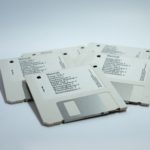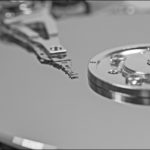To the outside world, FreeNAS (TrueNAS) and UnRAID appear far more alike than different. In effect, they are. Both are operating systems that allow you to leverage your own hardware as a NAS (Network Attached Storage) box, i.e. a highly-focused file server for sharing data across the network.
From there, while sharing features such as the ability to organize data, run VMs and Docker, FreeNAS and UnRAID part ways. The most obvious difference is that FreeNAS is free and UnRAID isn’t, though it’s not expensive as such things go, being $60 to $150.
However, cost is a trifling issue compared to the difference in how they handle storage. FreeNAS uses the traditional RAID modes baked into its OpenZFS file system, while UnRAID uses a file-level distribution system that bears more of a resemblance to JBOD crossed with RAID 3/4, than RAID 5 or such.

The FreeNAS interface looks different, but offer the same essential abilities to configure and manage the storage, as well as associated services such as VMs and Docker.

Storage Handling
As mentioned, but far the most salient difference between FreeNAS and UnRAID is how they handle fault tolerance.
The basic RAID modes offered by FreeNAS and its OpenZFS file system are:
- RAID 0 – File level writes, data duplicated on additional disks with no fault tolerance
- RAID 1 – Mirrored block level writes distributed across disks
- RAID 5 – Block level writes distributed across disks, distributed parity
- RAID 6 – Block level writes distributed across disks, double distributed parity
UnRAID offers only one method, and it’s similar to the dedicated parity disk RAID modes (3, 4 etc.), but with the difference that there’s no striping involved–just plain disks with file-level writes as with JBOD, but block-level parity written to a dedicated parity drive. Unlike JBOD, however, files are spread across all the data disks, and don’t just fill one spill to the next when the first is full.
Beyond that, RAID 5 uses XOR parity, while UnRAID uses Even Parity which are merely different roads to the same effect–fault tolerance (the ability to withstand loss of disks). UnRAID’s major advantage is that it allows one or two parity disks to protect an unlimited number of data disks, all of which retain their full capacity. This provides protection from one or two disk failures.
The obvious downside to the UnRAID approach is that as the number of data disks increases, so does the number of failure points. Hard drive reliability has increased drastically in the last decade from the 7% per annum failure rates Google and Carnegie Mellon studies revealed, but it’s still a calculated risk protecting only two of say twenty disks.
Common FreeNAS and UnRAID Advantages
Here are some common advantages that you’ll find with both FreeNAS and UnRAID:
- Easy to use interfaces
- Hosts virtual machines
- Host Docker/containers
FreeNAS Upsides
FreeNAS provides some advantages that are unique to itself.
- Uses the mature and powerful OpenZFS
- Standard RAID modes offer increased speed plus fault tolerance
- Fast performance without cache drives
- Fault tolerance with as few as two drives
UnRAID Upsides
Here are some of the advantages you can expect with UnRAID.
- Uses the maximum capacity of all data disks
- Parity drives protect large numbers of drives without reducing capacity
- Easy file level recovery
- Data on functioning drives remains available during resilvering
- Saves power and increases disk lifespan by spinning down unused drives
FreeNAS Downsides
Though there are a plethora of advantages, FreeNAS is not without its disadvantages:
- Fault tolerance greatly reduces capacity
- No choice in file system
UnRAID Downsides
As with FreeNAS, UnRAID also has a few downsides:
- Mediocre performance without SSD caching
- The UnRAID USB Flash Creator install disk creator is finicky
When to Use FreeNAS and UnRAID
Both FreeNAS and UnRAID are worthy solutions for creating your own file server. There’s no clear cut answer as to which is better, and you’ll hear worthy arguments from the proponents of both camps.
Our take is that FreeNAS is the better solution for those seeking traditional RAID with a tried and true volume manager/file system, while UnRAID is better if you’re seeking maximum capacity for non-critical data sets. We do recommend SSD caching for both and the aggressiveness of your backup strategy will effect the equation.










